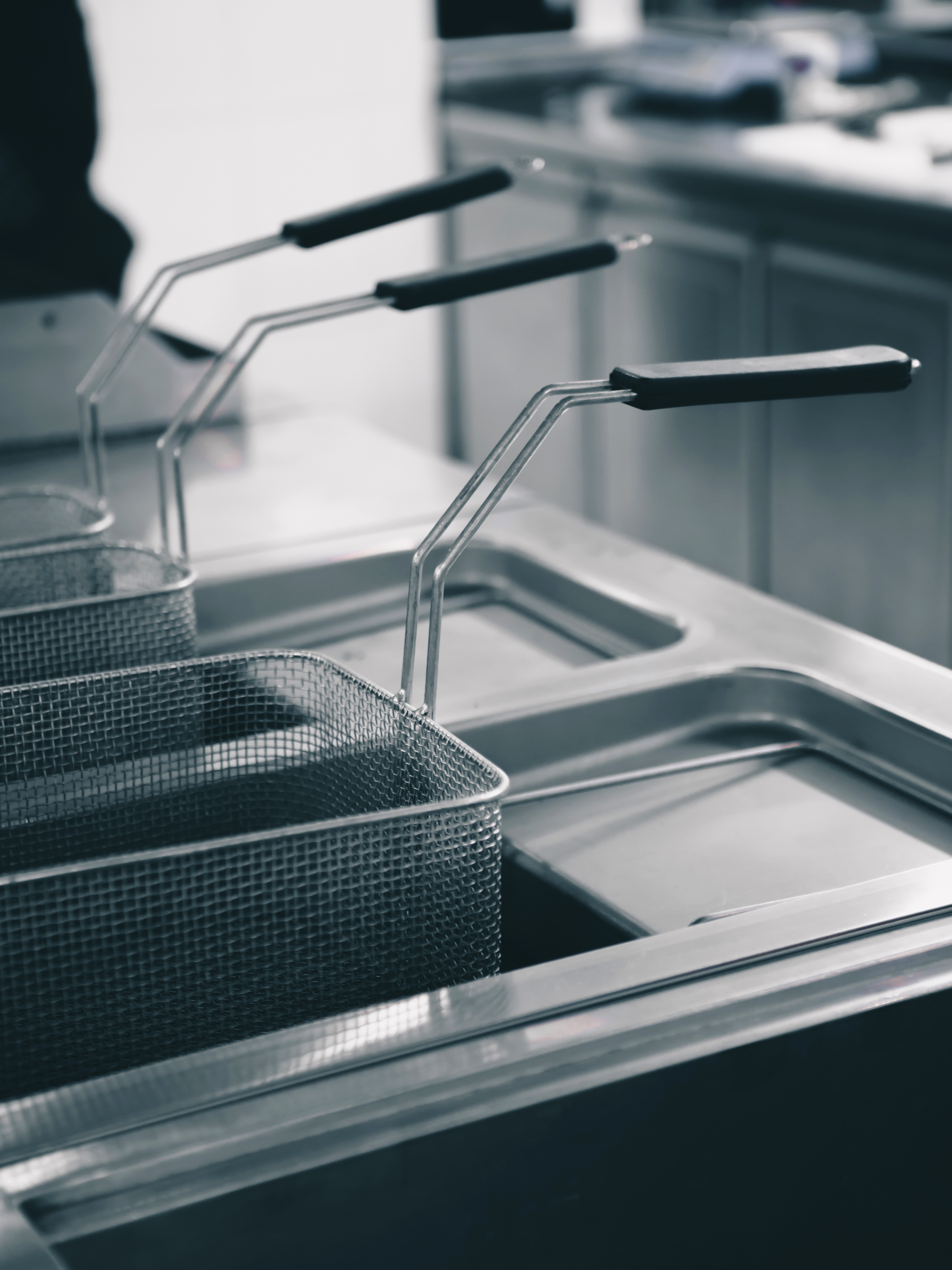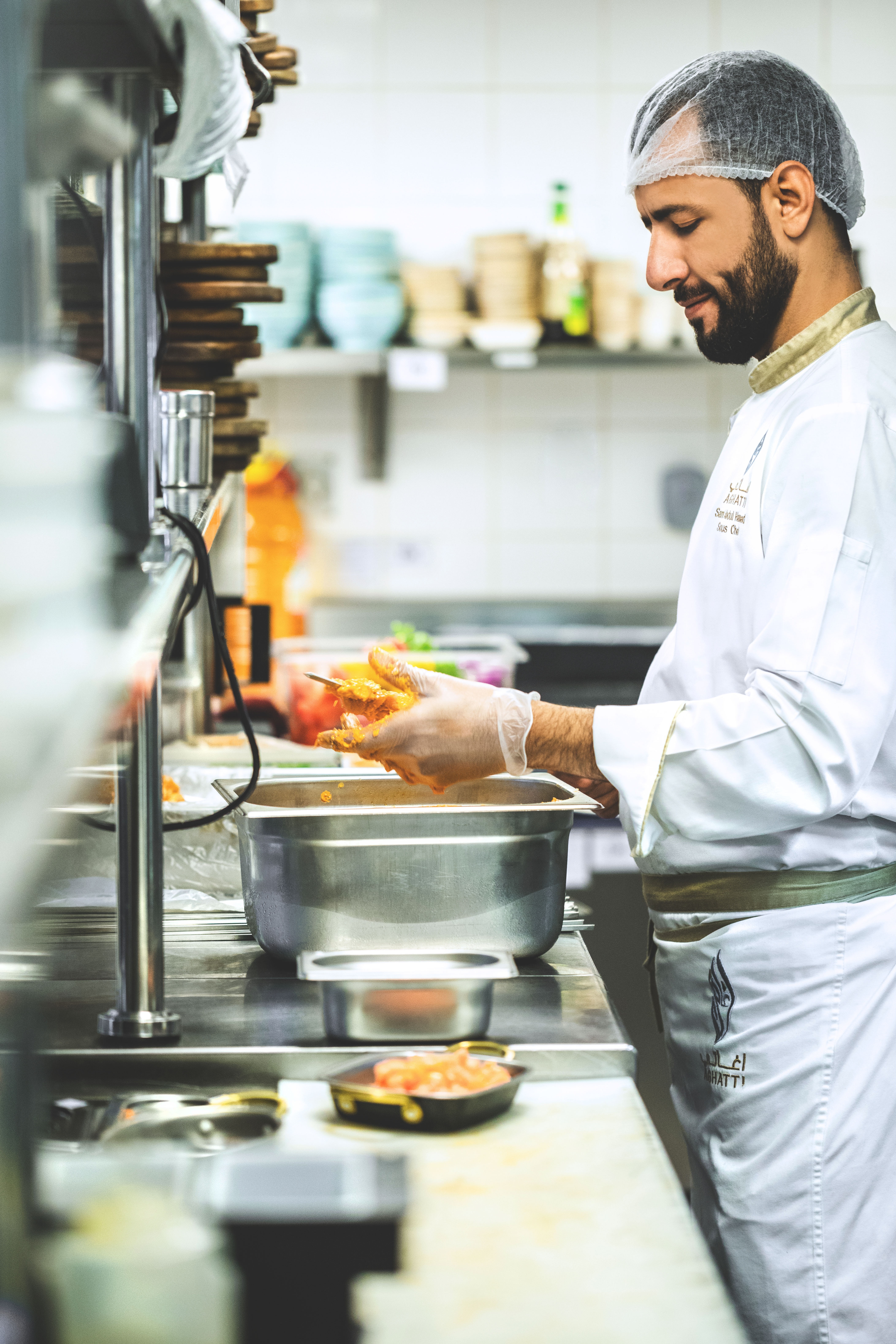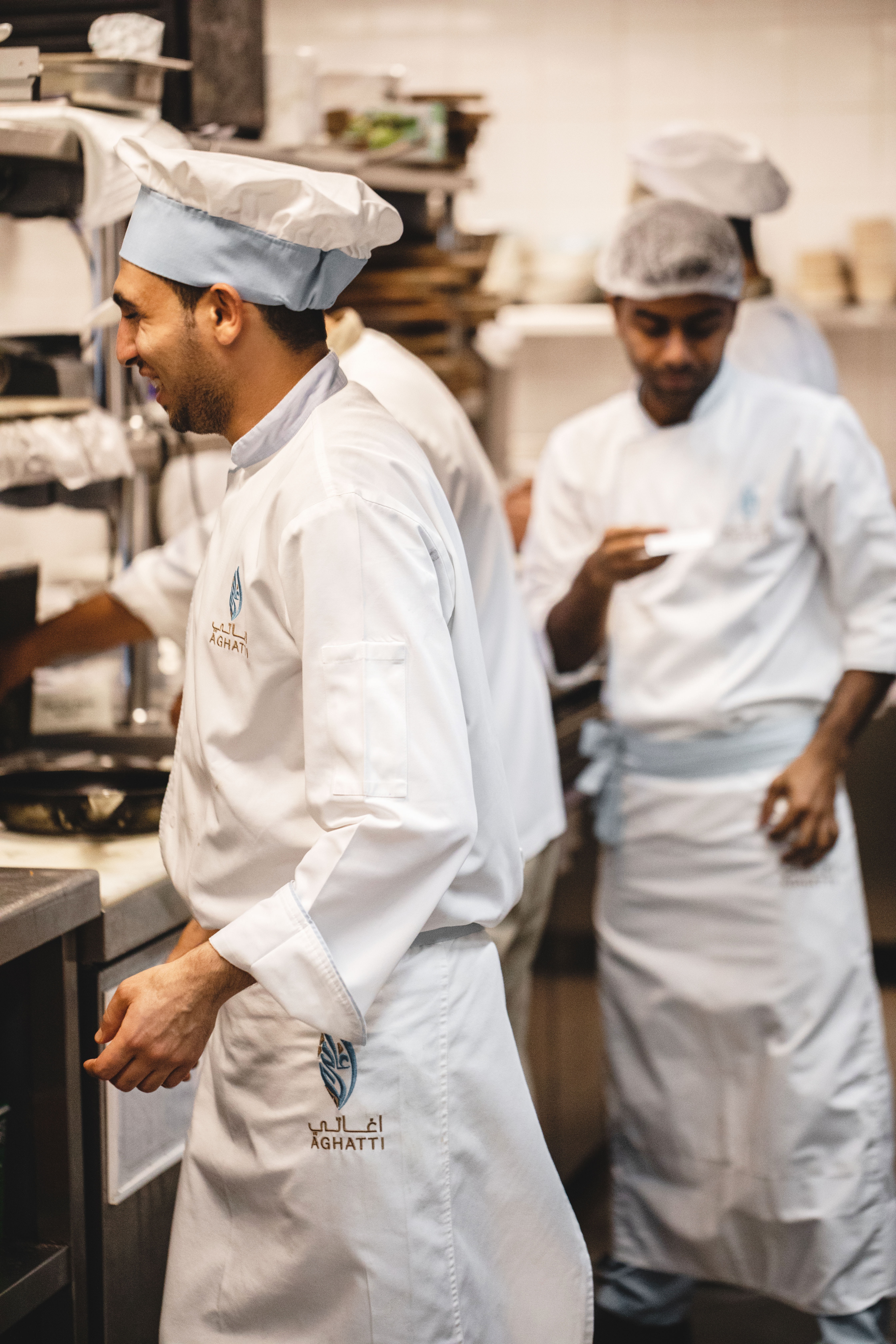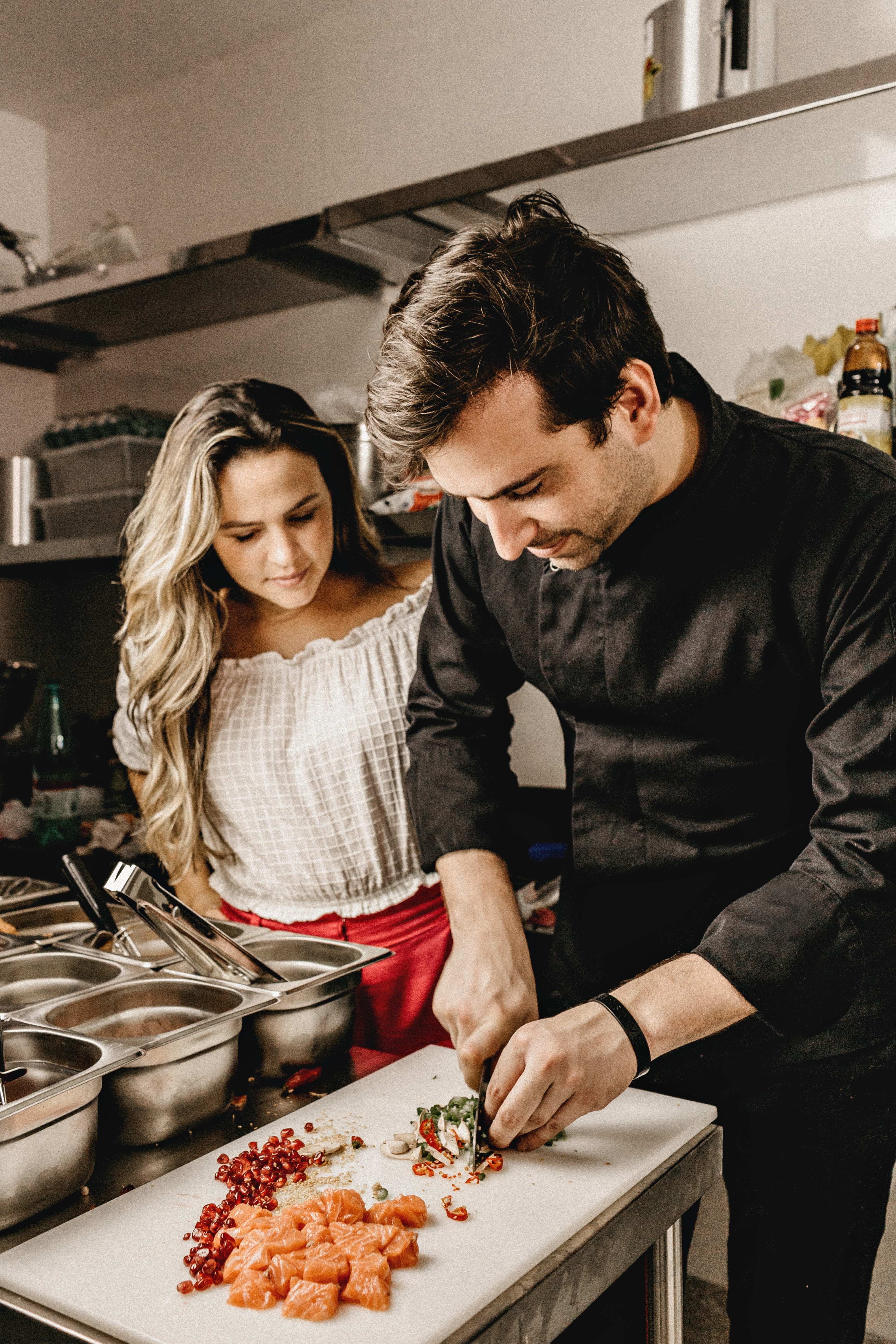10 Items Every Restaurant Kitchen Should Have to Avoid Workplace Injuries
4 Min Read By Bill Landess
214,400.
That’s how many workplace injuries U.S. restaurants reported in 2017. And one in four of those required days away from work.
To keep your staff safe and your restaurant injury-free, proper safety training matters — along with the right equipment to prevent those all-too-common slips, trips, cuts and burns.
Here’s what to prioritize for your kitchen.
1. Grease Pans
Lowering food into hot oil and cleaning deep fryers present the risk of burns. Grease pans and other fryer amenities can reduce this risk. Look for these features when purchasing a fryer, or as add-ons to upgrade your deep-frying safety:
- Grease pans that dump used grease automatically.
- Fryers with basket lifts that automatically lower food into hot oil, or remove them when cook time is done.

- Splash guards on fryers.
If the fryer and stovetop are side-by-side, install a divider to prevent oil splatter near open flames, which can cause grease fires.
2. Footwear
You probably already know: Slips, trips and falls account for the most common injuries in restaurants.
A durable shoe will prevent slips that could result in injury, and can also protect a worker’s feet and legs from falling objects or spills that could scald skin.
Closed-toe, slip-resistant shoes are a must for all employees. Opt for those with rubber soles or advertised as non-slip. To encourage compliance, consider a shoe safety program with a payroll deduction option and outline a clear policy on safe footwear.
Tip: For added safety, require employees to wear shoes that they can also easily remove, in the event of a hot liquid spill.
3. Floor Mats
Go a step further with non-slip floor mats to prevent slips and falls (along with a mop to keep floors clean of liquid spills and dropped food).
Features to look for:
- Wide holes for draining and foot traction.
- Grip or suction-backed, to prevent movement.
- Thick, durable rubber construction.
- Interlocking or cut-to-size, to cover all work surfaces.
“Anti-fatigue” mats serve a dual purpose; they’re more comfortable for kitchen staff who spend hours on their feet.
4. Gloves and Hand Protection
Flipping, chopping, grilling, plating. Your staff’s hands are vital to keeping a kitchen humming along seamlessly. This also puts them in the line of fire for injury.
Keep the kitchen stocked with hand-protective gear, and require that staff use them. Gloves, mitts or potholders should be used whenever reaching into ovens and broilers or checking food on the stove. Cut-resistant gloves that fit well and have sturdy, tightly-woven seams protect hands when cutting and chopping.

5. Knife Sharpener
It may be counterintuitive, but a sharp knife is safer than a dull one. Dull blades are prone to slipping mid-slice, and can cause nicks and lacerations.
Keep knives properly sharpened, and provide proper storage for knives. Blocks, docks, racks, under-cabinet, knife stations and magnetic strips will all keep knives safely stored and sharp, though they vary in usability and sanitation.
6. Protective Guards
One surefire way to avoid injury is to keep fingers and other body parts away from kitchen equipment that can cut, crush or burn. Protective guards are key:
- Some grills offer built-in guard bars, so workers won’t accidentally touch them.
- Splash guards on fryers keep hot oil contained and away from clothing and skin.
- Protective guards on slicing equipment keep blades out of hands reach.
Equally important is to train employees on the proper use and maintenance of all guards and other safety equipment.

7. Fire Suppression
All kitchens should keep a fire extinguisher nearby and inspected regularly. Larger kitchens may need a more advanced fire suppression system: When tripped, the system may automatically shut off gas lines and spray a fire suppressant to put out any flames.
Remember: while the hood over cooking stations removes smoke and heat, it must be cleaned regularly to avoid the risk of a grease fire.
8. Dollies and Carts
Equipment and food prep can be bulky and heavy, putting employees at risk for back injuries. Provide lifting aides such as dollies or carts when possible. Just make sure they have a designated home in the kitchen, to keep major pathways clear of obstacles.
And like any movement throughout the kitchen, staff should have a process for communicating when using them. Clear announcement of intent and movement throughout the kitchen can be the key to avoid collisions, spills and burns.

9. Designated Food and Waste Storage Containers
From food prep to clean-up, commercial kitchens require a number of containers for different uses. These include:
- Ingredient bins
- Lidded food storage boxes and containers
- Bulk food storage
- Vegetable crisper bins
- Waste bins
- Designated buckets for broken glass
Remember: Broken glass and other sharp debris should not be placed in regular trash cans; dispose of it in a separate, designated container.
10. Documented Safety Policy
A kitchen fully stocked with safety equipment is useless if staff doesn’t know what it is or how to use it properly. To maximize staff safety, create a documented safety policy. It should:
- Explain all safety equipment, their location and correct use. (This should also include first-aid materials and a burn kit.) Keep safety equipment user manuals for easy reference.
- Educate workers on basic hygiene and safety protocols.
- Provide exit and escape plans, and note the location of emergency exits.
- Outline expectations for communication, and all safety processes and procedures that staff should follow.
Tip: Have a safety policy? You may be able to save money on one or more commercial insurance policies. Ask your insurance agent if yours qualifies.
Keeping a Safe Kitchen
Food service jobs can be very physically demanding: sharp tools, repetitive motions, heavy equipment, hot surfaces, spills and a hurried work environment all put employees at risk for injury. Incorporate safety into your culture, whether it’s a quarterly safety training session or a quick safety tip added to team meetings. And use new hire onboarding as an opportunity to train your newest team members on safety procedures. The best way to stop unsafe habits is to prevent them in the first place.
Want more kitchen safety advice? 6 Safety Tips for Restaurant Owners to Avoid Kitchen Staff Disaster.


